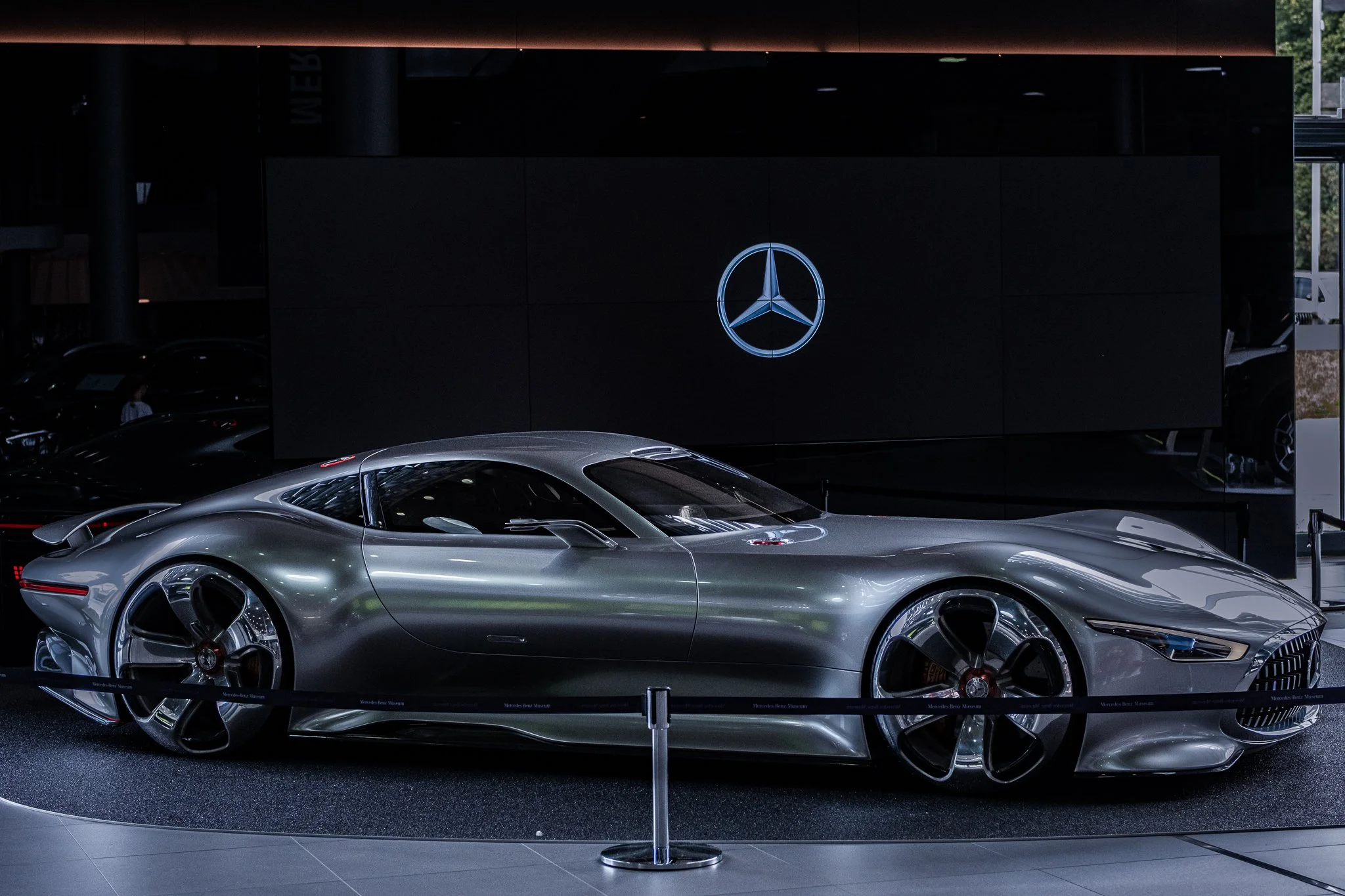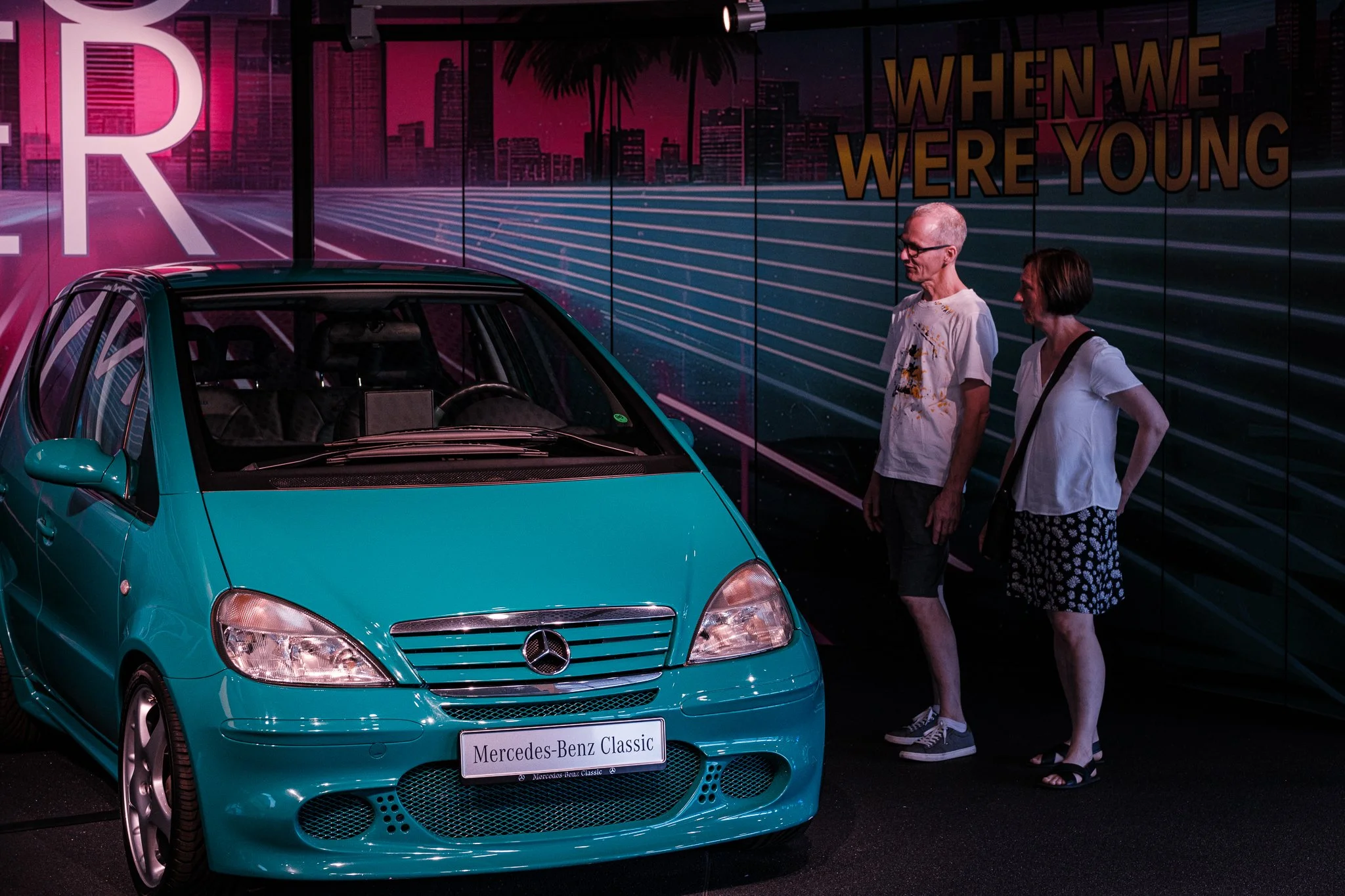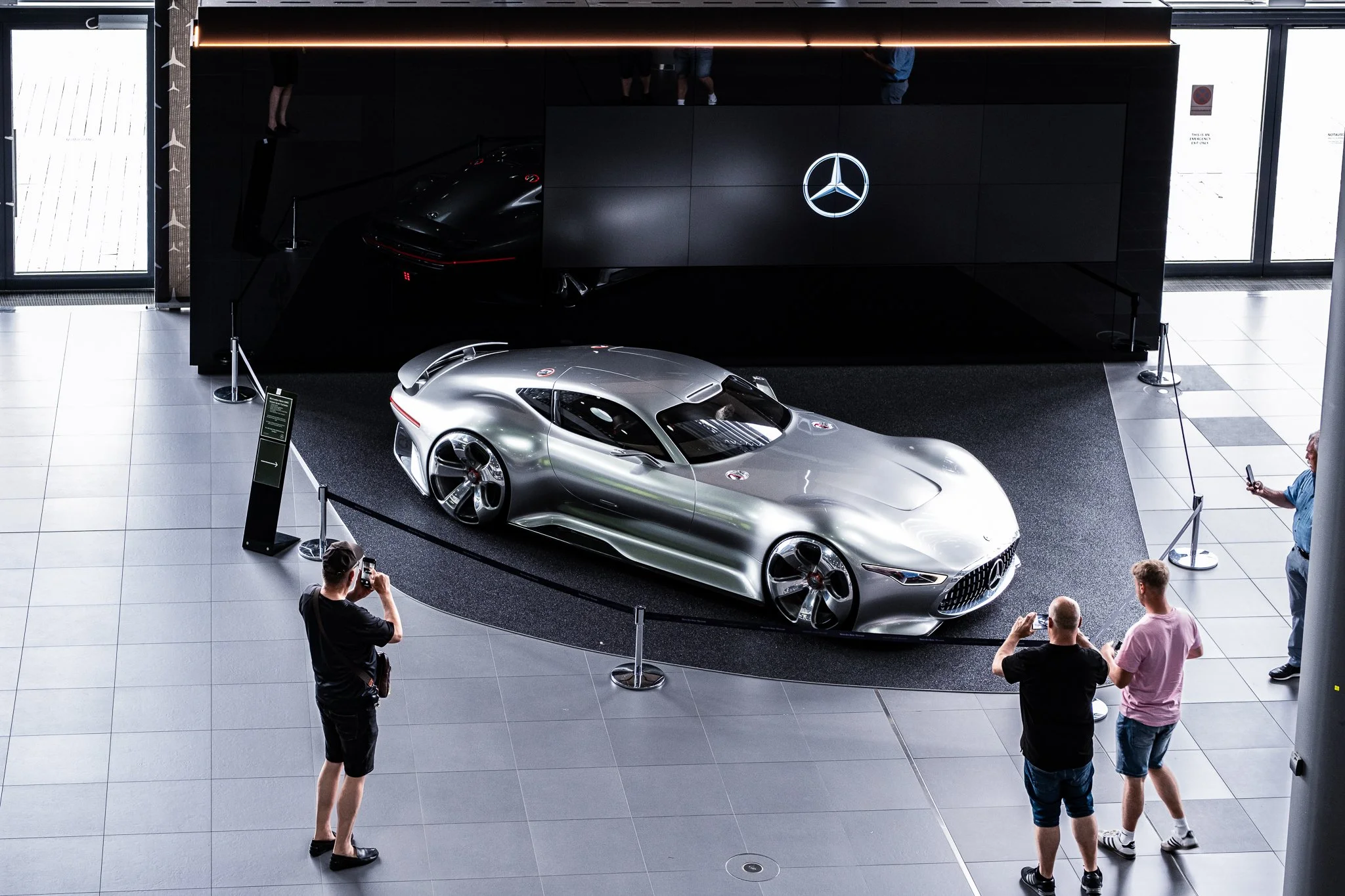Mercedes-Benz: The Art of Experience and The Power of Perception
The Mercedes-Benz AMG Vision Gran Turismo
There are brands, and then there are legacies.
There is a reason Mercedes-Benz is more than just an automotive brand - it is, in many ways, a masterclass in legacy, luxury, and emotional design.
Walking into the Mercedes-Benz Centre Headquarters in Stuttgart is not just entering a space. It is stepping into the soul of a brand that has not only shaped the automotive industry but also elevated the very idea of what a brand experience should feel like.
As a visual storyteller and architectural photographer, I observe spaces not just for their structure, but for the emotion they evoke. Mercedes-Benz understands that a well-designed space is a conversation with its audience. From the moment you step into the Stuttgart centre, that conversation is refined, aspirational, and timeless.
The space is not just a showroom - it is a statement. Every curve of the interior, every material choice, and every curated scene was crafted to make you feel something.
Design That Reflects the Brand’s DNA
The interior architecture of the Mercedes-Benz Centre is a harmony of form and function - clean lines, modern minimalism, and understated luxury. The design language so coherent throughout: precision-engineered materials, elegant use of light. The space is open, confident, and structured in a way that allows visitors to move freely while absorbing the Mercedes-Benz philosophy: precision, innovation, timeless elegance.
From the glint of polished metal accents to the soft curves of display vehicles, the building doesn’t just showcase cars - it embodies movement, innovation, and heritage. My camera moved instinctively - not because I was chasing angles, but because the space guided me. Light flowed gently through glass, reflecting off metallic surfaces, illuminating the legacy on display without ever needing to be loud.
It’s about feeling your place within a story.
The Customer Journey: Mercedes-Benz Understands the Power of Feeling
Where other automotive brands might focus purely on the product, Mercedes-Benz has built a sensory experience. It is not just about viewing the car; it’s about feeling your place within its story.
You are not rushed. You are not overwhelmed. You are inspired.
Through my lens, I documented not only the structure and lighting, but also the way people moved, how they paused, where they lingered, and how they responded. There’s no confusion here - only clarity. The design gives room for awe, comfort, and exploration.
What Makes Mercedes-Benz a Prestige Brand
Mercedes-Benz doesn’t just manufacture vehicles. They curate identity.
From their visual language and spatial design to the emotional response they elicit, everything is crafted with intention. Prestige isn’t about price - it’s about perception and Mercedes holds this prestige because:
They understand their audience deeply
They deliver consistent, high standard experiences
They prioritise emotional storytelling through space and design
They let the customer feel like a part of the innovation journey
This is why Mercedes stands above so many: it is not just the car. It is the world the brand invites you into.
What Other Brand Can Learn
The Mercedes-Benz Centre is proof that physical spaces are brand touchpoints. Design is not decoration - it’s strategy.
Other brands, regardless of industry, can learn that:
Consistency and clarity in visual identity builds trust.
Experience design isn’t just for luxury brands - it’s for anyone who values connection.
A brand isn’t what you say it is. It’s how your customer feels when they interact with you.
Final Thoughts
As someone who captures design through a lens, I often ask: “What feeling does this space leave behind?”
Mercedes-Benz answers this without words. Their spaces speak in legacy, aspiration, and quiet power.
For brands building their presence today, this is the benchmark:
Create experiences that don’t impress - but resonate.










